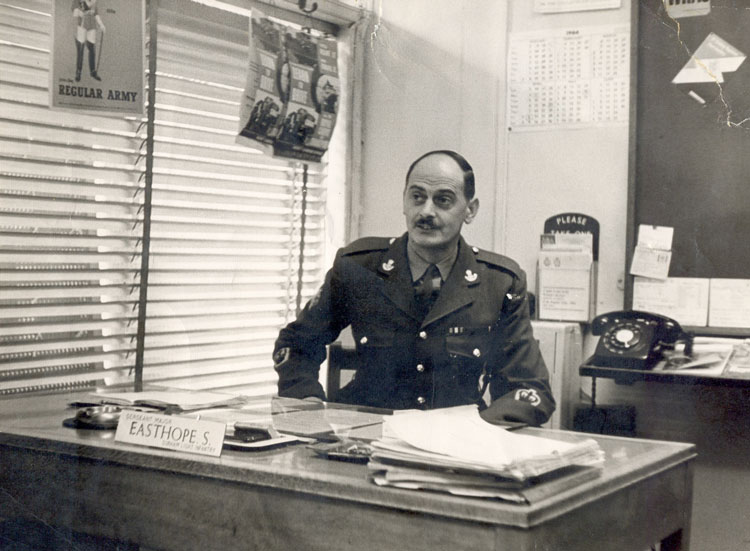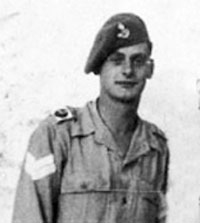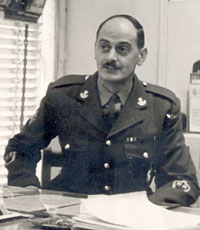|
This is a page within the www.staffshomeguard.co.uk website. To see full contents, go to SITE MAP.
The Battalion was commanded (as at February 1941) by Lt.-Col. M.F. Baker (left), late of the Royal Warwickshire Regiment. Later, command passed to Lt.-Col. H. R. Parsons, previously a Major in the same unit. It was a large battalion with approximately 80 officers and a total complement of between 1500 and 2000 men. It had originally been one of the ten constituent battalions of the Birmingham Home Guard in 1940 when it was known as the 2nd Birmingham Battalion. One of the members of "C" Company of this Battalion was STANLEY EASTHOPE (1927-1987), a resident of Hockley. Glimpses of his life and service survive and we record them on this page, mainly in the words of his family and in his memory.
Stanley
Easthope, known
as Stan, was born in 1927 in
Hockley, Birmingham and was the son of
Harold and Clara
Easthope, one
of seven children.
In 1921 the family were living at 39 Johnson Street, Birmingham and this may have been where Stan was born. Here is Stan in a studio photograph at the age of eight in 1935. By the outbreak of war, the family were at 250 New John Street West, Hockley and it may be assumed that this was Stan's home both during his Home Guard service and later. After leaving school at 14, in 1941, he worked as a butcher's assistant in Hockley.
At the height of WW2 Stan volunteered for the Home Guard, certainly under age, and his unit was "C" Company, 22nd Warwickshire (Birmingham) Battalion. Stan recalled a time in 1942 or 1943 when "C" Company were assisting a Civil Defence Heavy Rescue team at a bomb site following a German air raid in Birmingham. The site was cordoned off and civilians had been warned to stay clear. However, amongst a crowd of onlookers a young woman ignored the warning and the wall of a burning building collapsed on her. Although rescued she did not survive and sadly died in Stan's arms, a tragic incident from his time in the Home Guard which he never forgot. Further information on the location or timing of this incident might lead to the identification of the unfortunate young women but this has yet to come to light. Little information about Stan's Home Guard service seems to have survived, regrettably. No King George VI certificate which would have provided a date of joining, no images of that time. What does remain, however, is Stan's 1943 Certificate of Proficiency which tells us much. Here it is:
(The men shown under training on the spigot mortar are members of a nearby battalion, the 23rd Warwickshire (Birmingham) Battalion whose area of responsibility was Erdington. This is the sort training Stan would have undergone, perhaps supplemented by a visit to one of the specialised training units which the Home Guard ran. One was at Umberslade Park, Hockley Heath and a page of this website has a number of photographs of it taken during a 1943 visit by these same Erdington men).
Stan stayed with the Home Guard until he signed up for the Regular Army in Birmingham on the 7th November 1944. His desire was to join the Royal Northumberland Fusiliers although there seems to have been no family connection: the Army in its wisdom then assigned Stan, a ‘Brummie’, to the Durham Light Infantry! Stan valued his time in the Home Guard and the foundation military training he received along with his own hard work and professionalism helped him to become one of the youngest sergeants in the DLI. Stan served with the Durhams until the Regiment was disbanded in the late 1960s and then with the Light Infantry until the early 1970s.
He spent much of his time in the Regiment with Motor Transport, the ‘MT Platoon’. In addition to his service in Greece, Cyprus and Borneo, he also had postings in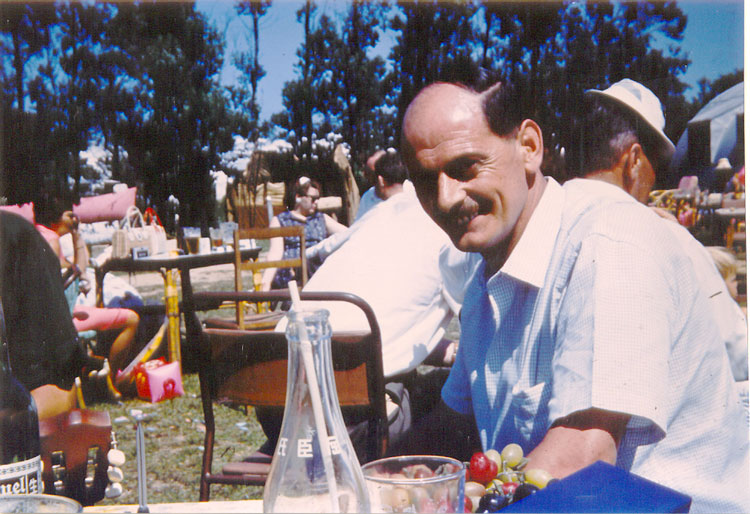 the post-war years in the U.K. with his family to
Barnard Castle,
Brancepeth, Honiton, Colchester,
Sunderland and Newcastle; and
further afield, including
Berlin, Dortmund and
Wuppertal
in Germany,
and also, in the mid-1960s, in
Hong Kong
(right).
(Whilst in Berlin Stan saw the construction of the
Wall; and, in Honiton, when
the Regiment conducted an
exercise on Dartmoor; one of the participants was
a former officer of the Regiment,
Peter de la Billière, later General Sir Peter, of SAS fame). the post-war years in the U.K. with his family to
Barnard Castle,
Brancepeth, Honiton, Colchester,
Sunderland and Newcastle; and
further afield, including
Berlin, Dortmund and
Wuppertal
in Germany,
and also, in the mid-1960s, in
Hong Kong
(right).
(Whilst in Berlin Stan saw the construction of the
Wall; and, in Honiton, when
the Regiment conducted an
exercise on Dartmoor; one of the participants was
a former officer of the Regiment,
Peter de la Billière, later General Sir Peter, of SAS fame).
In the intervening years between his enlistment in the grim last six months of the European war, through to his final overseas posting to Hong Kong from where he deployed to Borneo (the last operational deployment of the DLI), we can see further glimpses of his career in images, from Private to Corporal to Sergeant (immediately below) and eventually to WO2 in recruiting offices in the north of England (below, at the foot of the page):
Stan was able to rely on the support of a loyal Army wife through most of his career. He met his German wife, Ingeborg Charlotte Dietrich, in Dortmund in 1948 where the D.L.I. was stationed as part of the occupation forces; he was delivering rationed coal to her family home at the time. She, her family and a governess had made a harrowing escape from Königsberg (now Kaliningrad, Russia) in late January 1945 across the Baltic in the face of the advancing Red Army who surrounded and later captured her home city. Their home had been destroyed when the city, a key rail hub, had been destroyed by an RAF raid. The only possessions the family brought out from Königsberg were a few family photographs. This was during Operation Hannibal, the evacuation of 800,000 civilians and 350,000 military personnel led by the Head of the German Navy, Admiral Karl Doenitz. From 1945 to 1947 the Dietrich family were interned in a refugee camp in Aalborg, Denmark before repatriation to Schwerte, near Dortmund in Germany, the original home of the governess. On one occasion Stan recalled having a meal with Ingeborg’s family when to everyone surprise when Bertha’s glass eye fell into the soup! He also talked about the time he helped carry the body of a neighbour still sitting in his chair from the Bierstube (a pub) to the undertakers down Becker Strasse, the street where the family lived in Schwerte. There was some talk that he was still wearing his pickelhaube as the rather large and old German gentleman had once been a bodyguard to Count Ludendorff, the famous WW1 Prussian General!
British
soldiers marrying Germans was frowned upon and
actively discouraged in the post-war British Army
and attempts were made to stop Stan from marrying
Inge. However, they did marry in early March 1950
at the
Birmingham Registry Office
and
Stan was in good company: another member of the Regiment, a relative of Moss Evans, the General Secretary of the TGWU from 1978 to 1985 was married to Anna, another German from the Dortmund area. In post war years the German wives of the Regiment soldiers would often travel together back home to Germany, often taking the boat train from Harwich to the Hook of Holland. Army life in post-war Germany had its ups and downs, particularly for Stan married to an ‘alien’ at a time when there was still a policy of non-fraternisation. When they were first married, they were not granted the military accommodation to which they were entitled and had to find their own. During a posting in Berlin Inge was not issued with a ration card on the basis she was a German, although she was fully entitled to one. On the NAAFI bus she mentioned this to soldiers' wives in the Black Watch. They intervened on her behalf and the precious ration card was soon issued by the powers that be.
During the 1966 World Cup Stan and the family were on leave in Schwerte during the competition and needless to say his mother-in-law was not happy to see England win against Germany! In 1972 he was awarded the Meritorious Service Medal in recognition of 28 years of exemplary service in the Regular Army.
On retirement Stan settled in the North East, in Sunderland, initially working for Coles Cranes. He was offered a chance to work for Burmah Oil as materials manger on a project to build a Chemical Factory at the site of a former German WW2 explosives factory at Bydgoszcz, in Poland. This was the time when the Polish Trade Union movement ‘Solidarity’ was challenging the Polish Communist Government. The site was regularly disrupted by strikes, forcing the Burmah team to walk across the massive site to their accommodation, causing occupying Russian Forces great consternation as their activities might be uncovered. Stan also helped a fellow worker, with Polish links to deliver a precious photocopier to Solidarity at a rendez-vous in a pine forest. The Poles had little and materials often 'disappeared'. Stan took steps to trade things back by bartering Mars Bars. He also recalled that after Burmah completed the build they ran the production line only to discover a local manager had rented the collection tank out to a farmer as a grain silo. Once Stan completed the Burmah contract, he was offered a job in Hagen, near Dortmund for the industrial lighting company Schmidt Strahl owned by Inge’s relatives. The company manufactured flood lights for stadiums, including Borussia Dortmund, international airports and docks. Stan finally retired in 1981 and passed away peacefully at his home in Schwerte on the 1st January 1987, the day after Inge’s birthday. His daughter, Sonja (named by Inge after a famous Norwegian figure skater and film star of the time, Sonja Henie) married a Regular British Army Officer.
In memory of
Stanley Easthope Grateful acknowledgement is made to the family of of Stanley Easthope for providing the above information and generously permitting its publication in this website; and also to members of the WW2 Birmingham Facebook group and of the Birmingham History Forum for additional information. All family images © The Easthope and associated families 2022
|
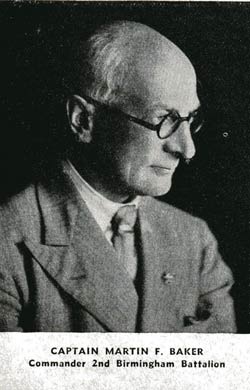
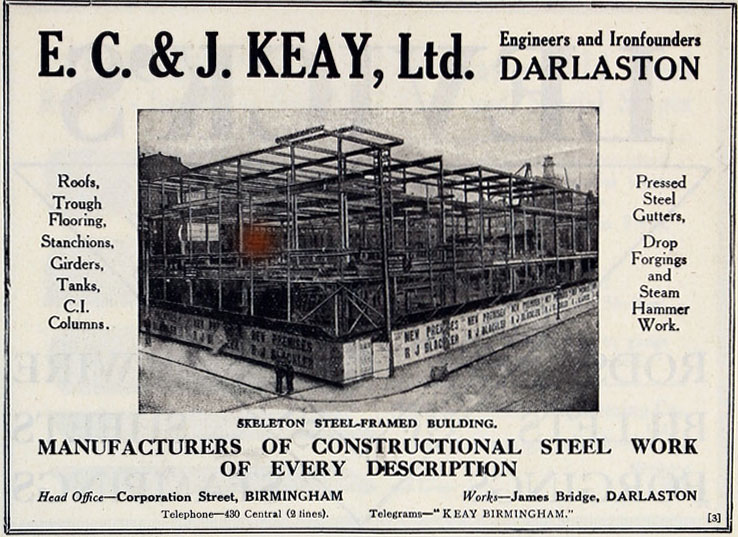 In
the postwar years Harold was employed as a steel erector and acetylene
cutter, working in 1921 for
In
the postwar years Harold was employed as a steel erector and acetylene
cutter, working in 1921 for 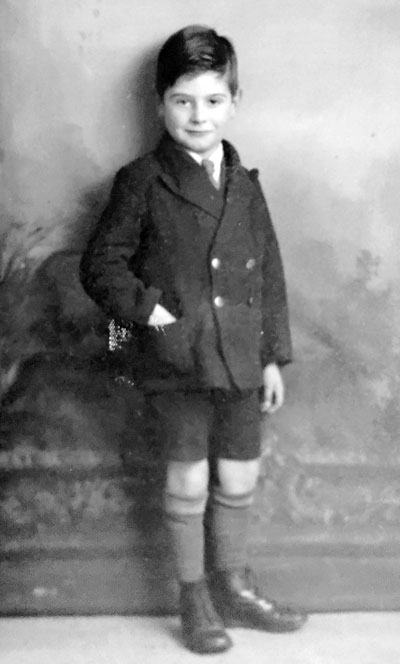 They
also manufactured the steelwork required for the
building of
They
also manufactured the steelwork required for the
building of 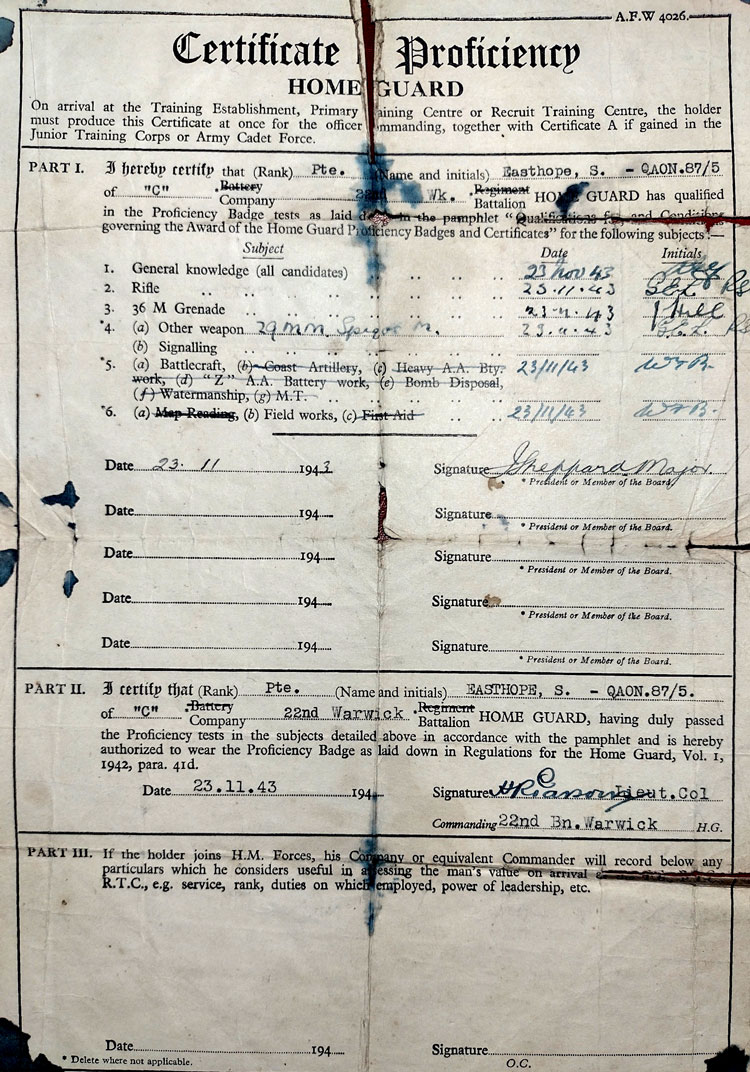
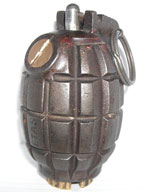
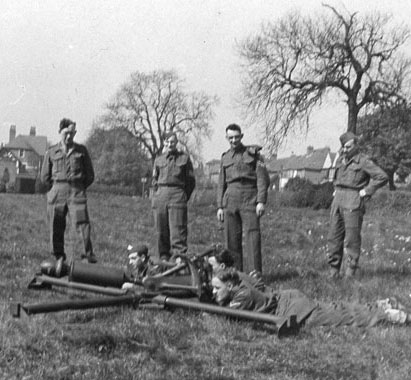
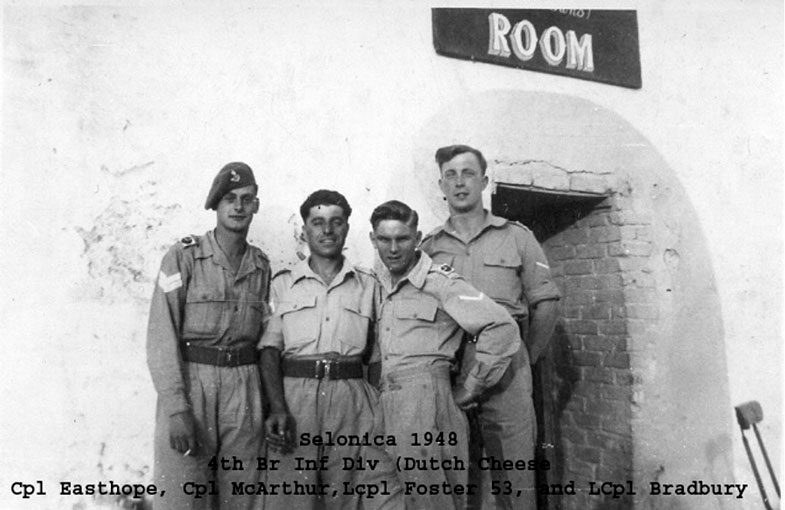 He saw
active service in
He saw
active service in 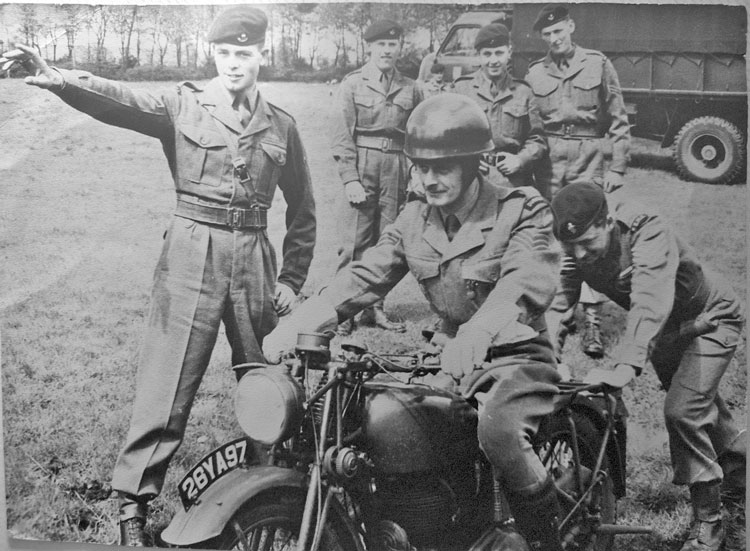
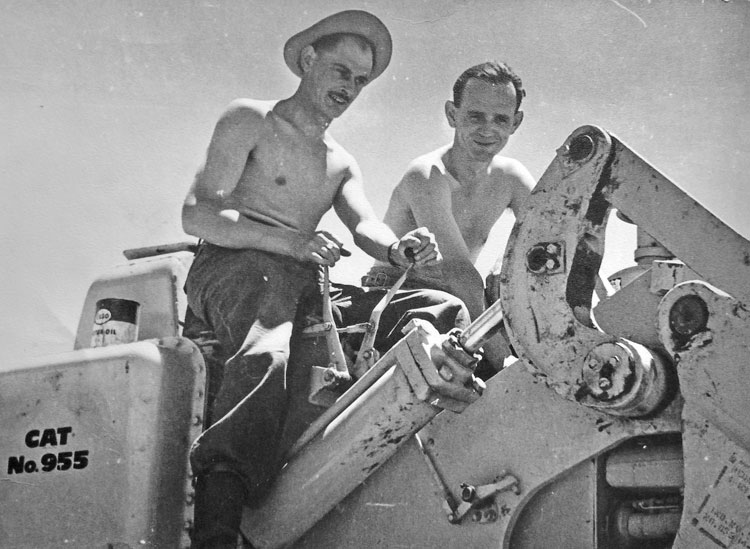
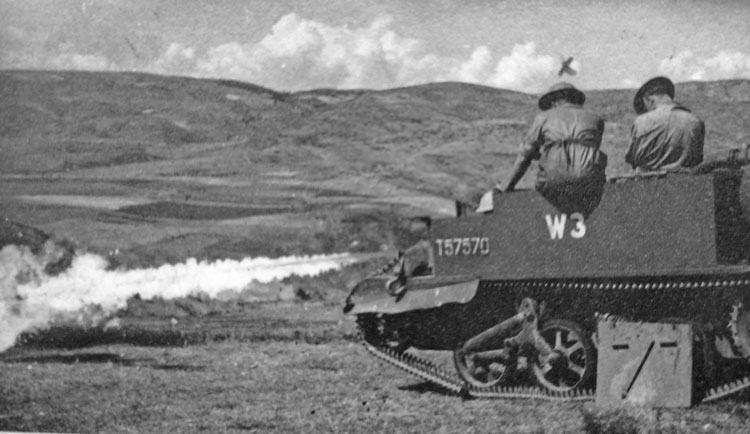
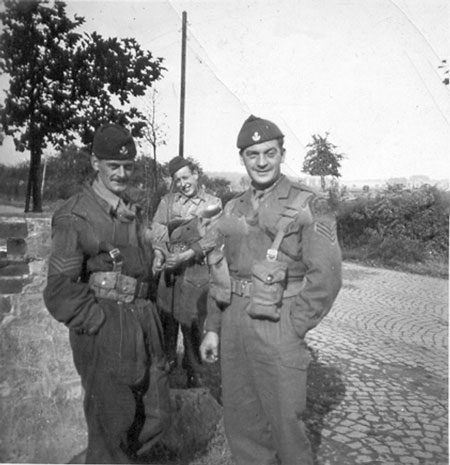
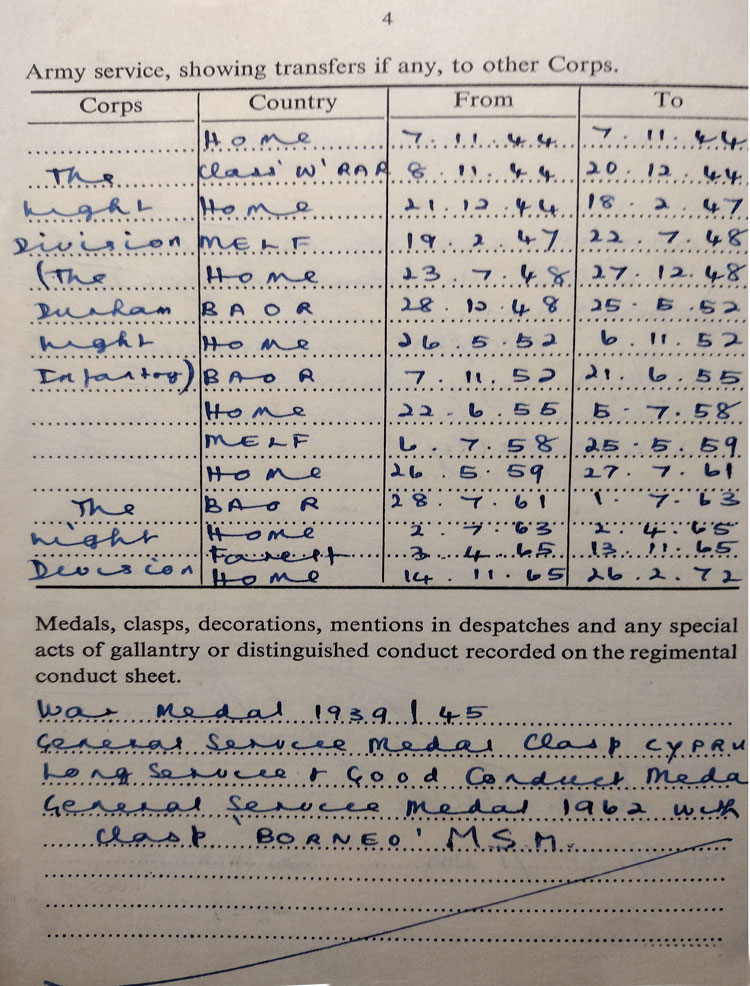
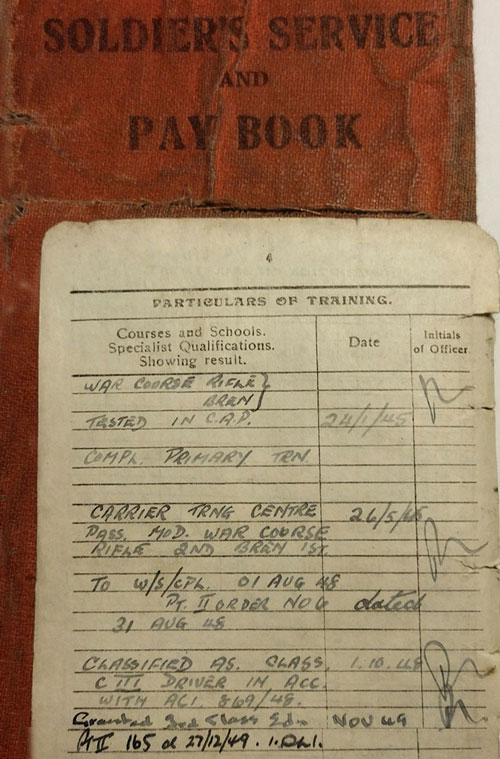
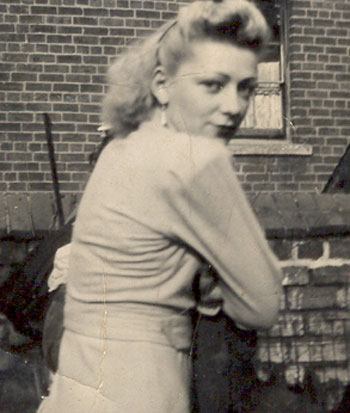 Ingeborg
received her British Citizenship soon after at the
Ingeborg
received her British Citizenship soon after at the 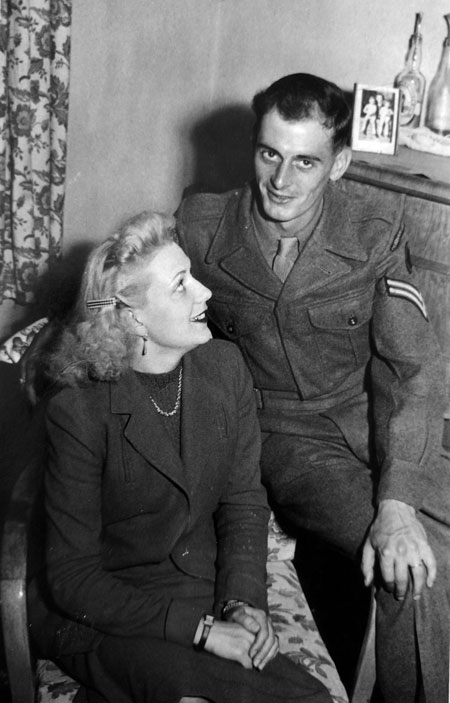
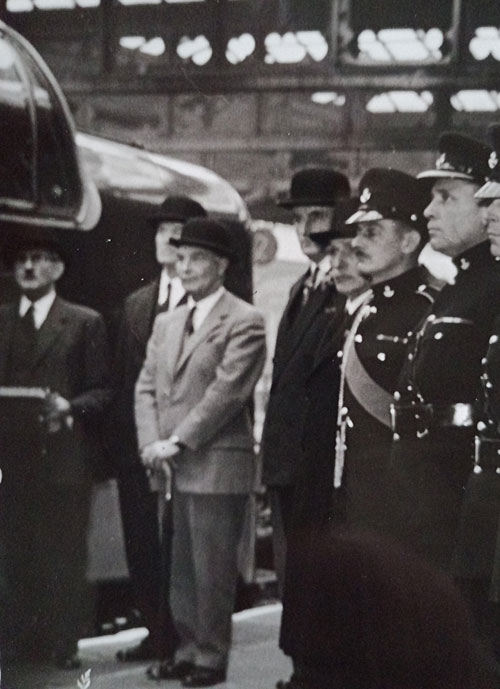 As a WO2 Stan spent his final
tours in the north-east of England in Army
Recruiting Offices. During this period he found
himself present at the formal ceremony when a new
Deltic locomotive acquired the name it would bear
throughout its working life - "The Durham Light
Infantry". This took place on 23rd October 1963.
As a WO2 Stan spent his final
tours in the north-east of England in Army
Recruiting Offices. During this period he found
himself present at the formal ceremony when a new
Deltic locomotive acquired the name it would bear
throughout its working life - "The Durham Light
Infantry". This took place on 23rd October 1963.